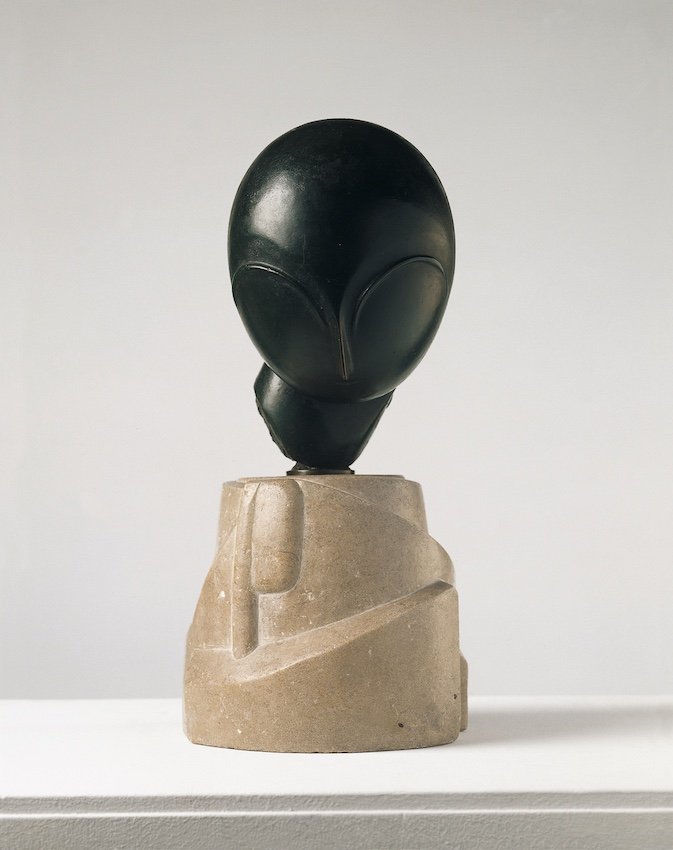Constantin Brancusi
Danaid, 1913

Constantin Brancusi
Danaid, um 1913
Kunst Museum Winterthur, Ankauf, 1951
Foto: SIK-ISEA, Zürich (Jean-Pierre Kuhn)
© ProLitteris, Zürich
In 1904 Constantin Brancusi walked all the way from Romania to Paris, where he first worked for Auguste Rodin for a time, but he didn’t endure the overpowering master for long.
Brancusi created his first sculptures in stone, some time later in polished bronze. They are reduced to simple forms; and in this they differ from Rodin’s expressive figures. Brancusi’s works are executed so that they must be viewed from all sides; a Rodin concept he did adopt.
One of Brancusi’s favourite subjects was female heads; it was women from his circle of acquaintances who inspired him. So, he created Danaid for example, based on the portrait of Mademoiselle Pogany, a Hungarian art student. From her portrait the head became a figure of antique mythology, the personification of springs and brooks, and her face became a greatly simplified plastic form.
The head is designed in the shape of an egg. The facial features have become symbolic sketch-like markings: the eyebrows, the nose running up to a point, the bun at the back of the neck.
The patination, which is the treatment of the surface of the bronze, was as fundamental to Brancusi as was the design of the form itself. The light shimmers on the black and implies the curve of the mysterious looking head.
Brancusi chose the bases for his figures himself. They are often made of wood, but here he designed a special stone base. The head can be turned on it, which enables the formation of manifold relationships between the facial features and the spiral form of the base.


